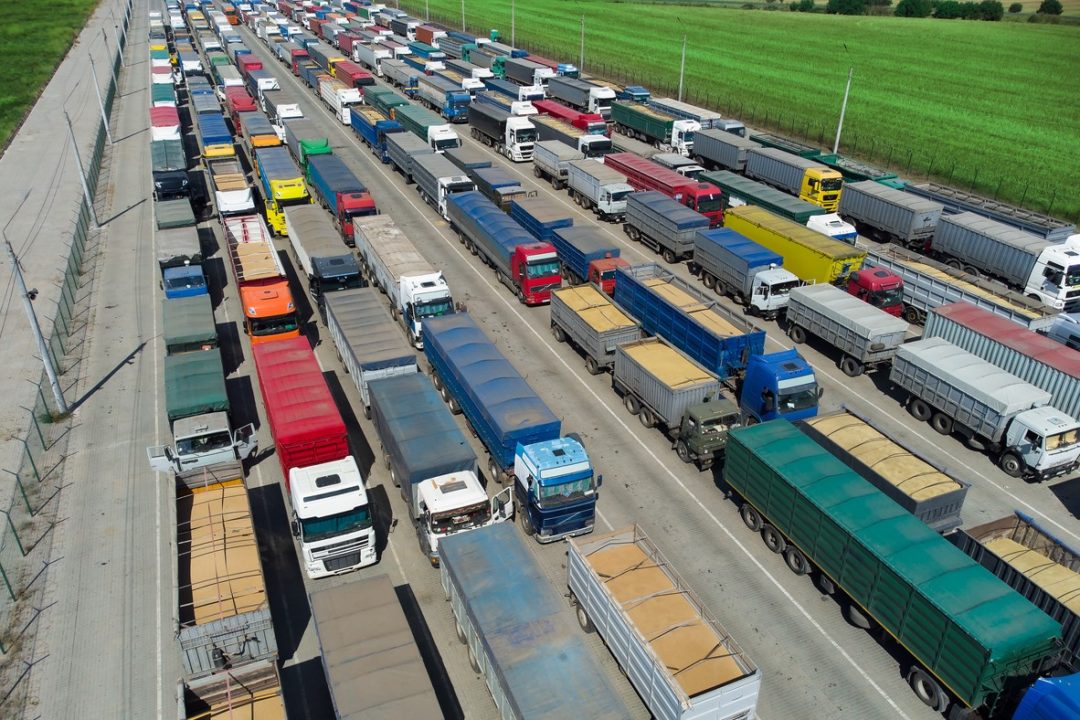
Constant shifts in supply and demand are hallmarks of the logistics industry. From measuring how many trucks are on the road or the volume of freight traveling across the U.S., objects as tiny as semiconductor chips, or world events as large as a global pandemic, significantly impact supply and demand. With so much uncertainty and continuous ebb and flow, it can be hard to predict what happens next in the industry.
Over the past three years, supply chains weathered a number of pandemic-related challenges, including a surge in consumer demand, shortage of new trucks and skyrocketing freight rates. In 2022, however, spending on physical goods began to level out, as consumers reverted to spending on experiences and outings. Large carriers started pulling freight out of the spot market by securing contracts with shippers, and diesel prices hit a record high of $5.75 per gallon in June. Too many trucks and insufficient spot freight led to falling spot rates, with national dry van rates dropping from $3.10 per mile in January to $2.38 per mile in November. As rates fell and fuel costs rose, the issue of operating with old, over-priced equipment became apparent. The higher cost of operating a truck amid rapidly decreasing freight rates quickly led to an unsustainable business model. Many new owner-operators signed on with larger fleets to control costs and stabilize their income.
Looking at the year to come and beyond, here are the top four logistics industry predictions for 2023.
New truck demand will remain steady; used truck prices will tank. In 2023, demand for new trucks will remain steady, even with uncertainty in the market. There remains pent-up demand from large fleets that haven’t been able to replace their aging equipment for the past two years and will buy most of the new equipment. This will flood the used equipment market with trucks, driving prices down significantly. Additionally, a portion of the price drop will be due to the number of bank seizures, repossessions and liquidation sales of trucks that will sell at auctions.
Freight rates will fall to near pre-pandemic levels. The supply chain bottleneck that stalled the global supply chain is now virtually nonexistent outside of a few key factors and markets, and those should disappear in the first quarter of 2023. Goods purchased and shipped at higher prices will likely be sold before Q1 2023, and the downstream effects of drastically lower shipping costs should become apparent in 2023. With this, freight rates will fall to near pre-pandemic levels. Due to the lingering effects of inflation, rates won’t fully return to 2019 levels despite falling quickly now. For example, the Freightos Global Container Index depicts rates at $1,400 in early 2020, with little change in prior years going back to 2017. Container rates peaked at over $11,000 in September, 2021, but have dropped over 80% to just over $2,100. The current national dry van rate of $2.38 per mile is just 45 cents from the December, 2019 average of $1.93 per mile, but the price per gallon of diesel was just $3.06 back then, compared with $4.98 now. The difference represents a 35-cent per mile higher cost to drive a truck averaging 5.5 miles per gallon. As diesel prices and truck demand continue to decline, freight rates will also fall.
Shippers will continue to reroute to Gulf and East Coast ports. Although total container volume is still high compared to historic numbers, it’s down 21% from last year as of September, so port congestion is no longer an issue. However, shippers will likely continue rerouting containers, resulting in the ports of Los Angeles and Long Beach losing market share. This is due to the higher cost of transporting freight over land, the ongoing labor disputes with dockworkers, and rail workers' unions creating uncertainty. Shippers see now that the cost savings associated with more miles on the ocean to get closer to its final destination is worth the extra time it takes. Nearshoring to Mexico and South America and diversification of sourcing away from China will also diminish the Southern California ports' market share. Additionally, there’s a potential impact of California’s Assembly Bill 5, which determines whether workers are employees or independent contractors.
More trucking companies will cease operations than in 2019. In 2019, we saw trucking companies cease operations as a direct result of an overly aggressive fleet expansion during the 2018 trucking boom. Given that the 2020 to 2021 boom dwarfs the numbers seen in 2018, the resulting bankruptcies, closures, and liquidations will likely be greater as well. The most significant contributor to most carriers dropping out will be falling freight rates, making it impossible to be profitable with higher operating expenses.
When will the freight market recover? The most optimistic prediction would have a recovery beginning in Q2 2023, but this is entirely dependent upon a best-case scenario for an overall recession in the U.S. The almighty consumer will be the biggest factor in how much freight is available in 2023, so a severe recession, leading to decreased spending on consumer goods amid a weak labor market, would be catastrophic for all small to midsized trucking companies. If the overall economy does experience a “soft landing” and begins to recover next year, freight rates will likely bottom out in Q1 and remain flat until seasonal freight volume increases in Q2, rising slowly throughout the following two quarters.
Matt Lawrence is chief executive officer of Fox Logistics.







